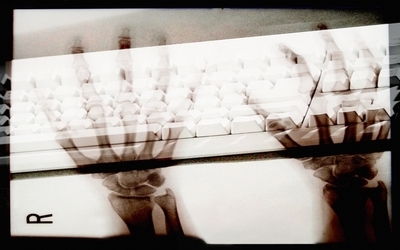Chinese Cupping Method Found to Treat Carpel Tunnel Syndrome
A few years ago, Gwyneth Paltrow attracted attention at an awards show when she showed up with strange red welts on her back. Before you fear for her wellbeing, it turned out that she’d just undergone a complementary wellness therapy known as cupping. This traditional Chinese treatment places glass jars on your skin and, according to a new study published in the Journal of Pain, this can be beneficial to your wellness if you have carpal tunnel syndrome.
For the study, 52 people who had been diagnosed with carpal tunnel syndrome – which is categorised by finger and wrist pain occurring when pressure is placed on a nerve protected by the carpal tunnel, a narrow passageway in your wrist – were divided into two groups. The first group underwent cupping therapy, which involved having glass jars placed over a section of punctured skin and air pumps placed at the opposite ends of the jars to remove air to form a vacuum. Through this suction process, your blood is drawn to the surface of your skin, and this is thought to enhance your circulation and alleviate your pain.
In the case of the study, the glasses were placed for five to 10 minutes over the shoulder muscle to affect the nerve that gets aggravated in carpal tunnel syndrome. In the second group, the researchers placed heating pads of over the same shoulder muscle for 15 minutes at a time. After seven days, the results of the study revealed that the cupping therapy group did significantly better, experiencing a 60% decrease in their symptom scores, compared to just 23% for the other group. This backs up previous pain-relief studies, which have found that cupping helps with lower back pain.
That said, the best way to treat carpal tunnel syndrome is to prevent ever getting it in the first place. You’re more at risk of the condition if you have a job or hobby that involves performing repetitive tasks with your hands, such as typing, needlework, or playing a musical instrument. If this applies to you – and, let’s be honest, who doesn’t do an excessive amount of typing these days? – it’s a good idea to take breaks every hour, and perform the six hand-stretching exercises below:
1. Stop right now: Hold your left hand up with your palm facing outward, much like you would if attempting to halt traffic. Then, use your right hand to pull each finger back towards the wrist, and hold the stretch for five seconds. Repeat the stretch on your right hand.
2. Namaste: At chest height, press the palms of your hands together, as if you’re about to say “Namaste” or pray with very dignified posture. Lower your hands towards your lap until you feel your wrists start to stretch, and hold this for five seconds.
3. Spirit fingers: This one’s pretty simple; just spread your fingers wide for five seconds.
4. Partially double-jointed: Have you ever had one of those conversations where you all talk about weird, double-jointed things you can do? Chances are, someone you know can touch their wrist with their thumb (on the same arm, of course, otherwise it’s less impressive!) Even if you can’t reach your wrist, try gently pulling your left thumb back towards your left wrist until you feel the stretch. Hold it for five seconds, and then repeat the move on your right hand.
5. The slow fist: Starting with your little finger, slowly curl each digit into the centre of your palm until you make a fist. After this, curl your wrists inward until you feel the stretch, and hold it for five seconds – just don’t do this while making eye contact with anyone or you’ll come across as a bit threatening!
6. Massage and shake: Finally, as the name of this movement suggests, massage the inside and outside of each hand, and then gently shake them out.


Comments are closed.